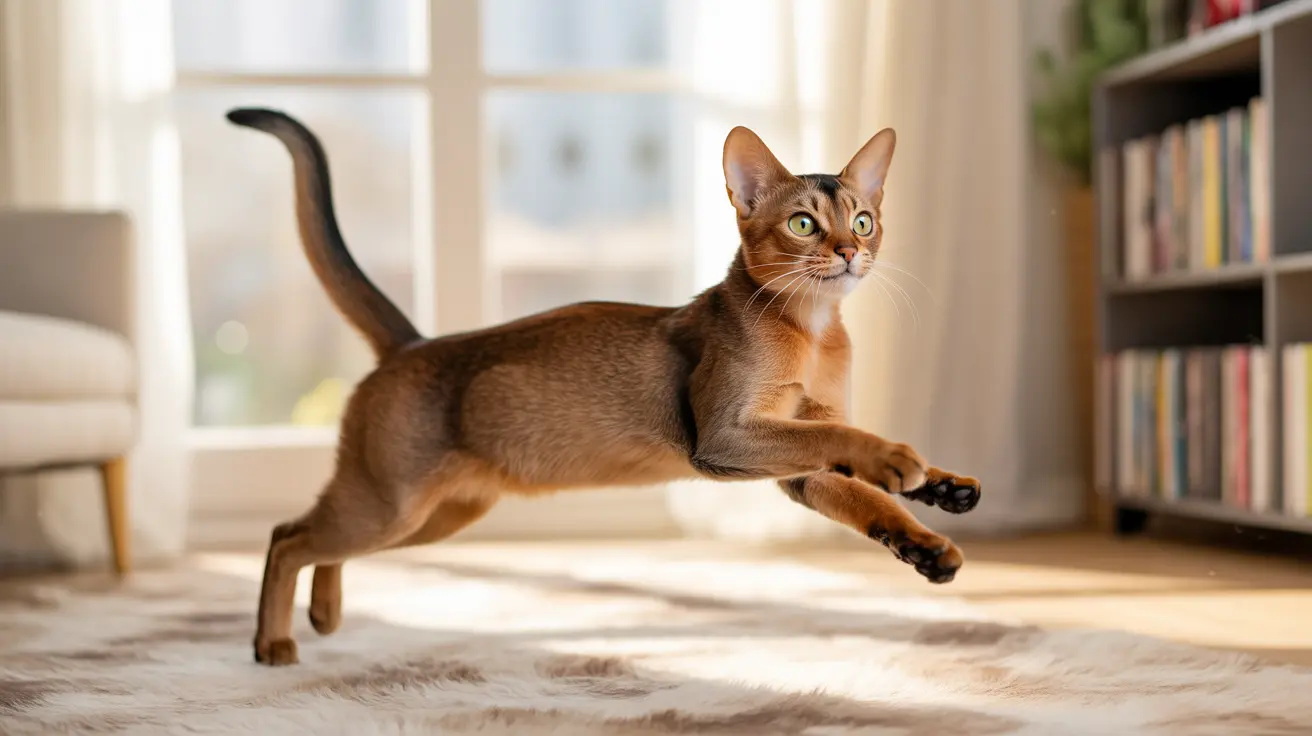What Causes Cat Excitement?
Cats experience excitement for various natural reasons, often tied to their predatory instincts and environmental stimuli. Common triggers include:
- Fresh catnip exposure
- Spotting birds or small animals through windows
- Post-nap energy bursts
- Mealtime anticipation
- Social interaction with owners or other pets
Understanding these triggers helps you better predict and manage your cat's excited states, ensuring a harmonious household environment.
Recognizing Signs of Feline Excitement
Excited cats display distinct physical and behavioral indicators that signal their heightened state of arousal:
- Dilated pupils
- Puffed-up tail
- Quick, darting movements
- Increased vocalization
- Rapid running or "zoomies"
- Exaggerated pouncing or jumping
Managing Your Cat's Energy Levels
Proper management of your cat's excitement is essential for maintaining a balanced household. Here are effective strategies:
Structured Play Sessions
Regular, interactive play sessions help channel your cat's energy constructively. Use wand toys, laser pointers, or rolling toys to simulate hunting experiences and provide mental stimulation.
Environmental Enrichment
Create an engaging environment with:
- Climbing trees and perches
- Scratching posts
- Window seats for bird watching
- Interactive puzzle toys
- Hidden treats for foraging
When to Be Concerned
While excitement is typically normal, certain patterns might warrant attention from your veterinarian:
- Sudden changes in excitement levels
- Aggressive behavior during excited states
- Excessive nighttime activity
- Signs of distress during "zoomies"
- Inability to calm down after excitement
Frequently Asked Questions
Why do cats get sudden bursts of energy called zoomies?
Cats experience sudden energy bursts, or "zoomies," as a natural way to release pent-up energy. This behavior often occurs after periods of rest or as part of their natural hunting instincts, helping them stay physically and mentally active.
How can I tell if my cat's excitement is normal or signs of overstimulation?
Normal excitement involves playful behavior and positive body language, while overstimulation may include signs like tail lashing, skin rippling, or aggressive responses. If your cat becomes nippy or tries to escape, they're likely overstimulated.
What triggers excite cats the most and cause them to zoom around the house?
Common triggers include catnip, prey sightings, post-litterbox relief, social interaction, and sudden environmental changes. Many cats also experience excitement during dawn and dusk, their natural hunting times.
How can I safely manage my cat's nighttime hyperactivity or zoomies?
Establish a routine of evening play sessions, provide environmental enrichment, and ensure your cat gets adequate exercise during the day. Consider feeding your cat their main meal before bedtime to promote rest.
When should I be concerned about my cat's zoomies and consult a veterinarian?
Consult a veterinarian if your cat's excited behavior suddenly changes, becomes aggressive, or is accompanied by other unusual symptoms. Also seek help if your cat shows signs of distress during these episodes or if the behavior interferes with their daily functioning.
Conclusion
Excited cats are typically displaying normal, healthy behavior that's deeply rooted in their natural instincts. By understanding these behaviors and implementing appropriate management strategies, you can ensure your cat maintains a balanced energy level while staying happy and healthy. Remember that each cat is unique, so patience and observation are key to finding the right approach for your feline friend.






